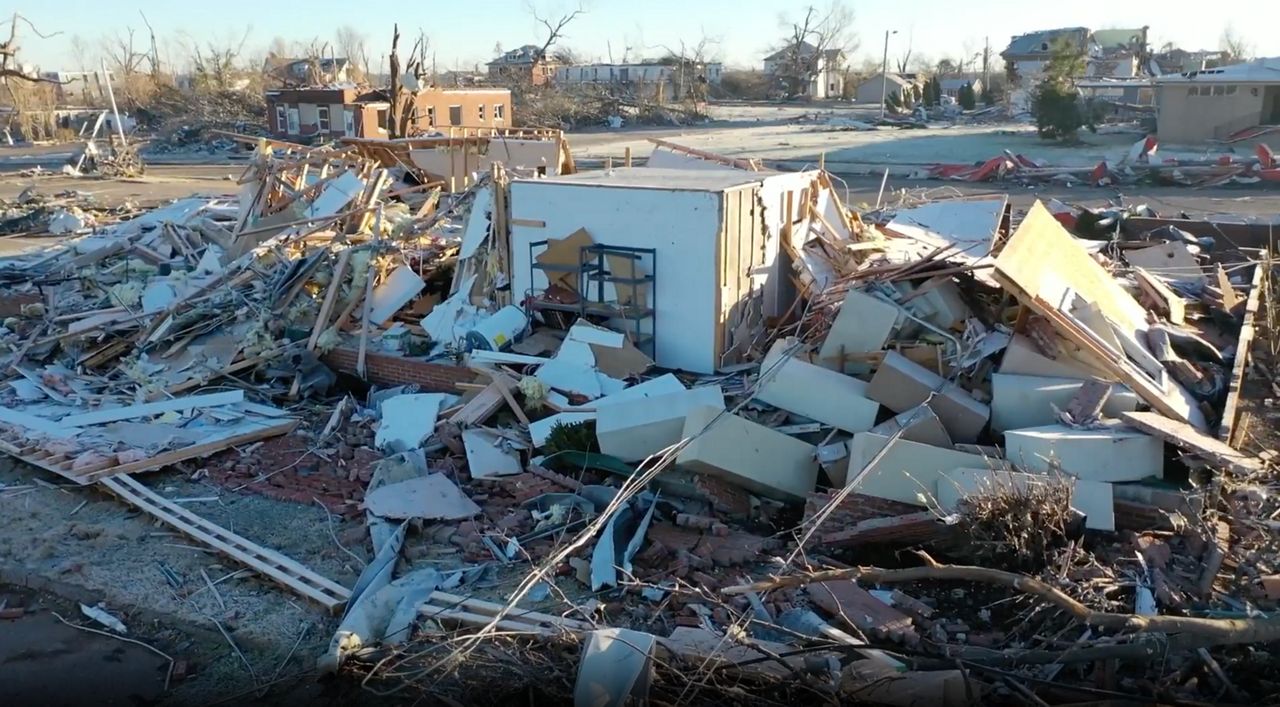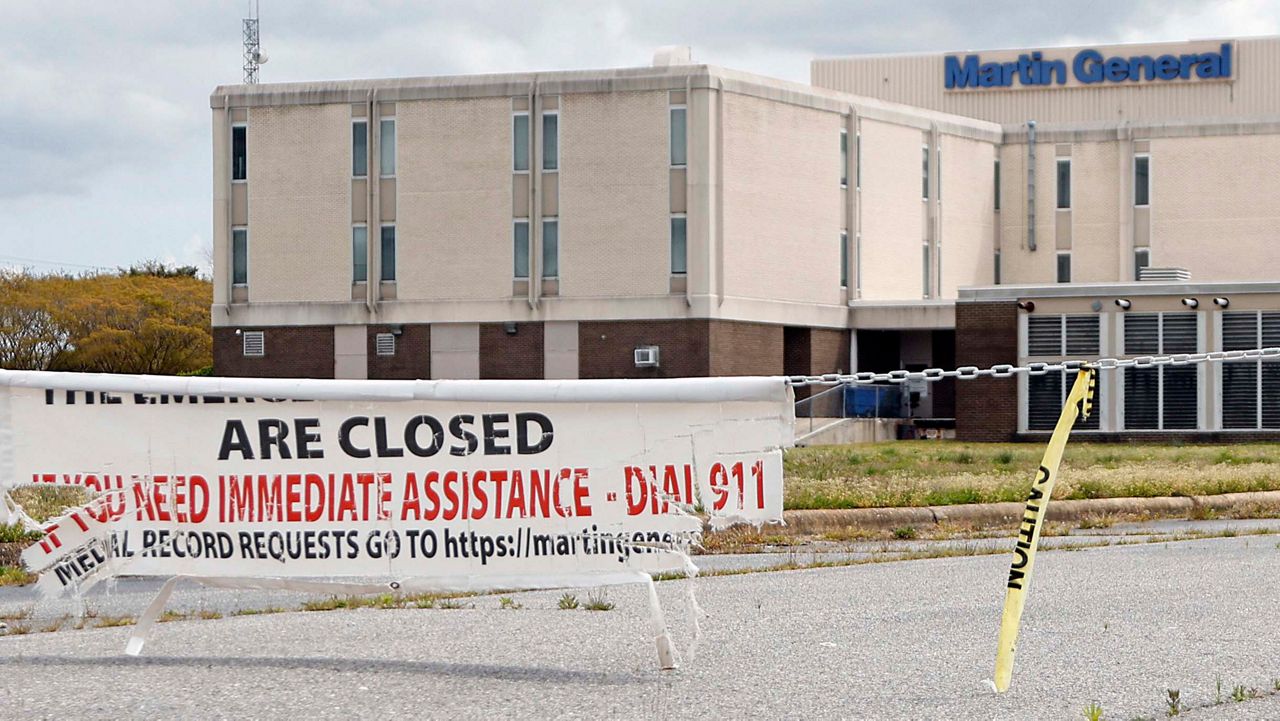CHAPEL HILL, N.C. — Depending on the time of year, finding bed space at a hospital's pediatric intensive care unit can be challenging.
The North Carolina Pediatric Society, the North Carolina affiliate chapter of the American Academy of Pediatrics, lists that almost 85% of beds in pediatric critical care wards are full.
Beds at UNC Children’s Hospital in Chapel Hill have been full regularly since early December when the Chief of Pediatric Critical Care, Dr. Benny Joyner, said up to 80% of patients were on some form of breathing assistance.
The children under their care have been as sick or sicker than in years past during this season of upper respiratory infections.
Spectrum News 1 cameras examined the patients facing viral respiratory illnesses, wait times for admissions and the workload the staff is handling around the clock from inside the hospital's pediatric intensive care unit.
On any given day the pediatric intensive care unit at UNC Children’s Hospital can be a melody of mayhem.
“We are pretty busy. Our capacity is pretty high right now,” Joyner said.
Pretty busy is an understatement for Joyner and his elite staff treating sick children day and night.
The visuals of nurses slipping on latex gloves in a jiffy only to go into room after room tell the story of a busy unit.
There is no space for treating more than 20 sick children at a time in this ward. At the time, at least half of the patients were sick with some variation of upper respiratory illness.
“Sometimes there’s a real limit to what we can do, and sometimes we have to say no. We have to make some difficult decisions about how we’re proceeding forward in caring for patients beyond our walls right now,” Joyner said.
Joyner keeps no secrets about the state of the PICU.
“If you’re in the ICU you’re at a high risk of complications, death even, and you require monitoring on a minute-to-minute, hour-to-hour basis,” Joyner said. “I think that what we are seeing is truly a sicker child.”“If you’re in the ICU you’re at a high risk of complications, death even, and you require monitoring on a minute-to-minute, hour-to-hour basis,” Joyner said. “I think that what we are seeing is truly a sicker child.”
However, he said the often deadly lessons learned from the COVID-19 pandemic enhance the quality of care their multidisciplinary team provides to patients in the present.
You’ll often see a huddle of providers — the pros at work.
“Right now, they are rounding on the patient in that room that they are standing outside of,” Joyner said.
These rounds typically begin at 8 every morning. The rounds, which are essentially a crew made up of various medical workers and experts, vary the speed they stop by each room based on the severity of sickness for each child. The acuity of illness plaguing the ward has caused these rounds to take much longer than teams would like.
“It’s routine in the sense this is what we do every day,” Joyner said.
Joyner said family-centered rounds comprise a lead physician, trainees, the respiratory therapist, the in-house pharmacist, a bedside nurse and any family members interested in listening in on their health care plan.
“When these just come up and we sit down and discuss the plan of care for every single patient throughout the unit,” Joyner said.
Equipment, medical teams and patients are coming on and off the floor so quickly, it can be like navigating the middle of a game-day atmosphere every waking moment. Multiple doctors on the floor confirmed the severity of sickness for these children has been so rough this year, not all of them have survived.
“That's particularly challenging. I think that's where the training comes in,” Joyner said. “That's where the time spent. You know, every individual, every individual family is different. And so their needs are different. How they receive information is different. So you just have to develop a relationship and sort of learn.”
Joyner said years of experience taught him the best ways to handle how to approach each conversation with a family on a case-by-case basis.
“Wanting to understand every single step of the process and can handle that is different from the family member that maybe just says, 'do whatever you need to do, I don’t want to know about all of the details,' and so how you navigate that is always a challenge, but that’s the art of the science of medicine,” Joyner said.
The PICU can become a home away from home for the sick boys and girls in their care. Joyner said why not make it look and feel like the homes they left behind, especially for the moms and dads who come to visit.
Stuffed animals sit at the foot of the bed in multiple pediatric rooms.
A life-saving note was taped on the door frame of PICU room No. 9 warning each person who enters to vigorously wash their hands.
No one, family nor worker, could enter this critically ill little one’s space using hand sanitizer alone.
But not everything here is gloom and doom.
The fatherly figure wants this ward to feel as much like their room at home as possible while embracing that certain life milestones are going to happen inside these walls.
A balloon left behind from one child’s stay is proof.
“Kids aren’t just little adults. The needs that we have aren’t necessarily halved or reduced because they are children. They have as complex physiology or even more so in a lot of situations as adults do. So, the needs are as intense,” Joyner said.
It's a scientific art they are well-practiced in.
Being a family man gives Joyner a practical sense of empathy when talking about a child’s health with their parents.
“It’s a daily experience where we try to do the best that we can,” Joyner said. “That sicker child requires much more intensity. We’ve had to become more efficient and more refined in our processes.”
The doctor confirmed over the past month and a half, there were 160 flu cases, 65 cases of respiratory syncytial virus (better known as RSV) and at least 60 COVID-19 pediatric patients receiving treatment at UNC Children’s Hospital.
Joyner said the average length of stay for their patients is 3-4 days. The availability of resources, staffing and bed space can affect that as well.
The PICU also serves as a training ground for the next generation of medical workers, cutting their teeth in the heat of some of the health care industry’s toughest and most rewarding environments before potentially leaving the ward to provide the same level of care for some children somewhere else.
Officials from the UNC Health system announced an intention to build a new freestanding children’s hospital in the face of a dwindling amount of pediatric beds not only at their current children’s hospital in Chapel Hill but to alleviate patient demand in the Triangle and across the state.









